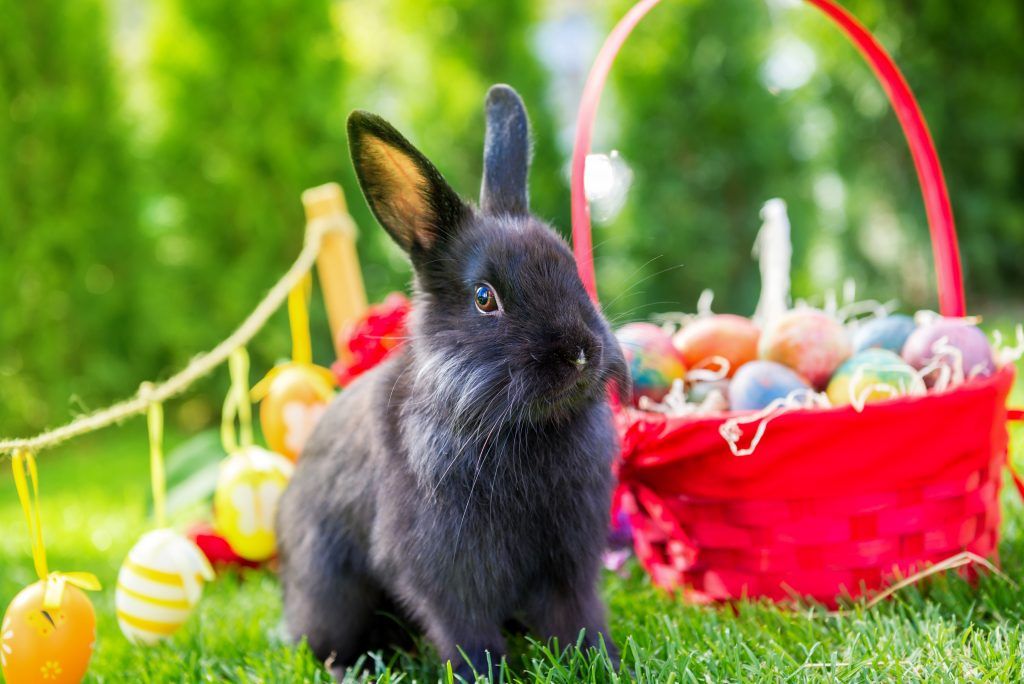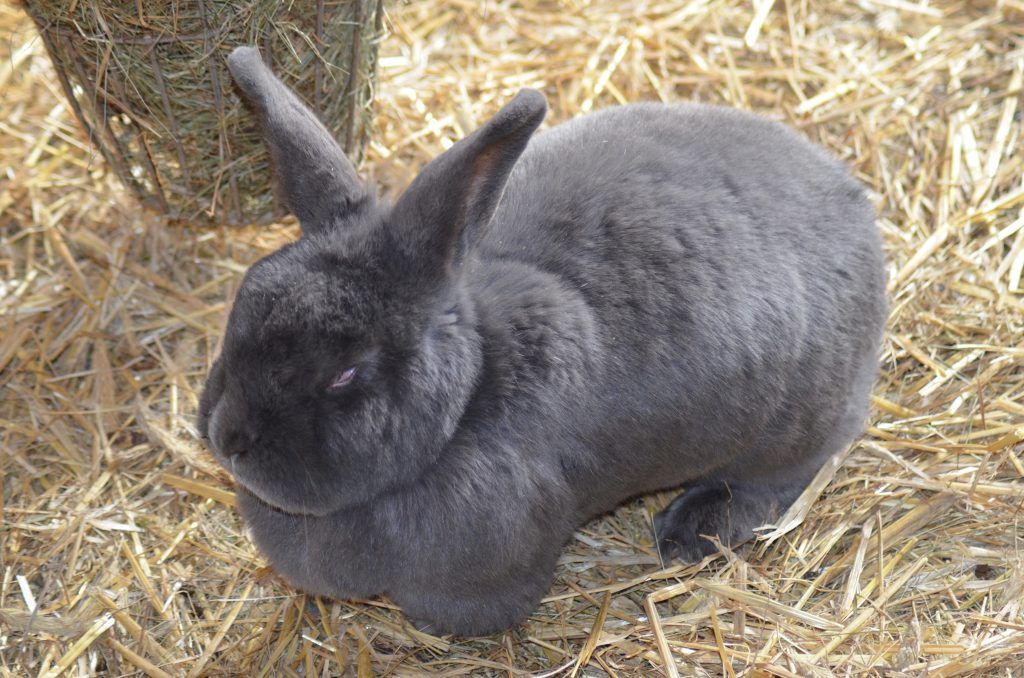Features of Viennese rabbits
Breeding rabbits today is a fairly popular and profitable business, because animals are the owners of delicious meat and high-quality skins.

Description of the Viennese blue rabbit
The Vienna Blue Rabbit is one of the most widespread breeds in Russia and the CIS. This is not surprising, because in addition to the incredibly attractive appearance and performance indicators, the Viennese blue rabbits have a calm and obedient character, they are non-aggressive towards their owners.
Before purchasing a representative of the breed, you need to know better its description in order to be prepared for possible surprises.
Description
The Viennese rabbit is known for its dense, compact and slightly elongated body with well-developed muscles and strong bones. The back and chest of the breed are wide enough. The blue rabbit has small ears, reaching 15 cm, with a pronounced rounding at the ends; deep blue eyes.
The weight of the animals ranges from 4-5 kg, but there are exceptions when the blue rabbit grows to 6.5-7 kg.
To remember what the charming Viennese blue rabbits look like, just look at their photos once. It immediately catches the eye:
- The presence of a thick hairline, painted in a steel color with a bluish tinge. The color is uniform and has no blotches of black or white. Sometimes the cover can take on lighter shades in the abdomen. Fur skins are the most valuable material for light industry.
- Slender body (its length rarely exceeds 60 cm).
- The bunny's chest.
- Small slender legs.
- Wide and round loin.

The appearance of the Viennese blue rabbit
After birth, the representative in question is distinguished by rapid development and intensive growth. The weight of newborn animals is in the range of 70-80 g, but within 4 months it completely reaches the standard norm. If you start to feed them with appropriate feed, then after 60 days one and a half kilogram animals can grow, and after another couple of months - rabbits weighing 4.5 kg. When keeping representatives of the breed, there is a high growth rate and a good return on feed.
In addition, rabbits are quite productive and bring up to 10 animals at a time, provide babies with maternal care and the necessary qualities for proper and healthy development. Small pussies have a blue and fairly large skin with an even and thick coat and a glossy sheen.
The high quality of the fur of the described animals is so amazing that the demand for its purchase is only growing.
White and black representatives of the breed
Other equally famous rabbits of this breed are white and black rabbits. The Viennese True Black Rabbit has similar body, head and ears characteristics. Its main advantage is the reference raven-winged skin and the elegance of its appearance. That is why every breeder wants to have a black animal.Unlike blue rabbits, the animals have a larger head, especially in relation to the body, and a more pronounced back line. The animals are also characterized by the presence of a feline bend and small legs located parallel to the body.
As for the white Viennese rabbit, it is distinguished by its unique snow-white fur and bright blue eyes. The Hungarian rabbit has a similar description, but it has a large body weight and can be considered a giant. Representatives from Vienna are also quite large, but weigh only 5 kg. The body is muscular, with a prominent chest and short head, while the neck is rather small. Like other colors, whites are in demand due to their valuable and unique fur. In addition, the animals are able to quickly adapt to any territory and are not capricious in matters of maintenance. They are often bred even in particularly harsh climatic conditions.
Gray fur is in less demand than skins of the previously described colors. Often the American and black-brown rabbit are ranked among the animals of the breed, but this is an erroneous opinion, because representatives of brown flowers are painted in 2 colors, and not in a uniform one tone.
Content
The Viennese blue rabbit is unpretentious and quickly adapts to any situation, therefore the changeable climate and other individual characteristics of the content will not frighten him. The animal is not very demanding. So, it is enough for a rabbit breeder to choose the most convenient way of keeping: a barn, an outer cage or a rabbit house. The best option is an outdoor cage that can be placed in a shed or left outdoors. In addition, it is allowed to change the placement methods, based on the season, weather, health status of the animal, etc.
The cage conditions for keeping Viennese blue rabbits have several advantages:
- the ability to control the spread of infections;
- drawing up a specific and individual feeding regimen;
- the ability to control mating and okrol;
- convenience in disinfection and preventive measures.
When choosing one or another method of keeping, it is necessary to provide for the fact that the animal in the future can be in comfortable conditions and be able to move freely and eat in a balanced way.
Feeding
In order for the rabbit to provide the owner with high quality skin, you need a balanced and proper diet. It is important to compose the menu taking into account the individual nutritional requirements of the animal. The main emphasis should be on the following:
- The blue rabbit should receive sufficient amounts of green food and various kinds of bran. Feeding with fishmeal, whey and acorns will be very useful.
- Providing rabbits with succulent root vegetables, silage, garden fruits and melons (e.g. watermelon, pumpkin, squash).
- Feeding with hay, willow, linden branches, shrubs.
- Blue rabbits shouldn't need food packed with fiber and essential nutrients.
Dirt and dust should not penetrate the food, and mold should not appear. You need to leave it in the most convenient location for the animal. In addition, rabbits should be provided with free access to clean and fresh water.
It is especially necessary to closely monitor the condition of the animals in autumn and winter, because it is at this time that the Viennese blue rabbits begin to experience an acute lack of nutrients and vitamins. In order to prevent diseases and deterioration of the condition of animals, it is necessary to diversify feeding with concentrated feed. When calculating the feed consumption is guided by the weight of the animal: 4 feed units are needed per 1 kg.
How to choose a rabbit for the farm
In addition to the blue color of the rabbit, it is important to pay attention to some more characteristics of the individual in order to raise a truly healthy animal.
- The rabbit must be mobile: if the animal is not active, you should consult a doctor.
- The rabbit should have a straight and graceful back. If it is humpbacked or failed, this cannot be considered a normal sign.
- The Fuzzy should have a movable head, however, frequent throwing and twisting indicate the presence of problems associated with poor blood circulation in the brain.
- The animal must have the correct bite: the lower teeth should be clearly under the upper ones.
- Rabbits from the Vienna Blue breed cannot have "bald" limbs - the legs must be pubescent. The same applies to the condition of the skin: it must be thick, somewhat plush and cannot have white and other blotches and marks.
A rabbit can only be purchased after a thorough examination, when all criteria have been determined. It is better to make a purchase from a trusted seller.
Advantages and disadvantages
The disadvantage of this species is only one: intolerance to stress and cheap, dirty food, which is quite reasonable and suitable for the characteristics of any animal.
The benefits include:
- Good adaptability not only to climatic conditions, but also to feed. The first factor played a significant role in the distribution of the breed in Russia. Plus, open-air cages, warm rabbitries, cages and sheds are suitable for breeding.
- Fast weight gain from birth and 65% clean meat after slaughter. To obtain dietary meat, slaughter must begin after 70 days after birth.
- The presence of an incredible and unique color of fur, which is distinguished by a pleasant appearance and fluffiness. The skin of rabbits is considered to be of very high quality, its large size is also striking.
- Quick addiction to the owner and the absence of any aggression. The disposition of babies is so calm that they are sometimes used as decorative ones (which is not always appropriate, because rabbits need special care for their wool and a large room for life).
Rabbits of the Vienna Blue breed, as it turned out, have not only a pleasant appearance and a calm disposition, but also other positive traits. Tasty meat, high quality animal fur, environmental friendliness put the Viennese blue rabbits on a pedestal of the best breeds.


